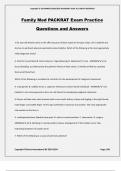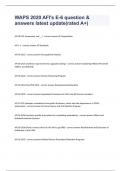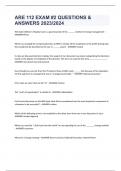Exam (elaborations)
Family Med PACKRAT Exam Practice Questions and Answers
Family Med PACKRAT Exam Practice
Questions and Answers
A 52 year-old female comes to the office because of black stools for the past 3 days. She is afebrile and
she has no pertinent physical examination abnormalities. Which of the following is the most appropriate
initial diagnostic study?
A. ...
[Show more]
Preview 4 out of 68 pages
Uploaded on
November 11, 2024
Number of pages
68
Written in
2024/2025
Type
Exam (elaborations)
Contains
Questions & answers
Institution
Prep Tests
Course
Prep Tests
$13.49
100% satisfaction guarantee
Immediately available after payment
Both online and in PDF
No strings attached
Copyright © OLIVIAWEST2024/2025 ACADEMIC YEAR. ALL RIGHTS RESERVED






